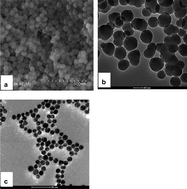A novel and efficient method to evaluate the DNA hybridization based on a fluorescence resonance energy transfer (FRET) system, with fluorescein isothiocyanate (FITC)-doped fluorescent silica nanoparticles (SiNPs) as donor and gold nanoparticles (AuNPs) as acceptor, has been reported. The strategy for specific DNA sequence detecting is based on DNA hybridization event, which is detected via excitation of SiNPs-oligonucleotide conjugates and energy transfer to AuNPs-oligonucleotide conjugates. The proximity required for FRET arises when the SiNPs-oligonucleotide conjugates hybridize with partly complementary AuNPs-oligonucleotide conjugates, resulting in the fluorescence quenching of donors, SiNPs-oligonucleotide conjugates, and the formation of a weakly fluorescent complex, SiNPs-dsDNA-AuNPs. Upon the addition of the target DNA sequence to SiNPs-dsDNA-AuNPs complex, the fluorescence restores (turn-on). Based on the restored fluorescence, a homogeneous assay for the target DNA is proposed. Our results have shown that the linear range for target DNA detection is 0–35.0 nM with a detection limit (3σ) of 3.0 picomole. Compared with FITC-dsDNA-AuNPs probe system, the sensitivity of the proposed probe system for target DNA detection is increased by a factor of 3.4-fold.

